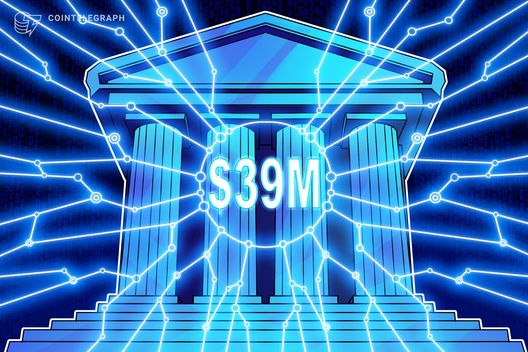ARTICLE AD BOX
For decades, physicists have promised that quantum computing would one day outrun classical machines. That day may have arrived.
On Oct. 22, Google’s Willow quantum processor completed a task that supercomputers would need 150 years to finish by compressing centuries of calculation into two hours.
Industry experts say the result, verified by Nature, isn’t only a triumph for science. It’s a tremor through the foundations of digital security, sparking a renewed question in financial circles: how close are we to a future where quantum power can break Bitcoin’s cryptography?
The breakthrough
The breakthrough centers on the Out-of-Time-Order Correlator (OTOC), or “Quantum Echoes,” algorithm.
By running it on 105 physical qubits at 99.9% fidelity, Willow became the first processor to achieve verifiable quantum advantage, proving that a quantum computer can solve a complex physical model faster and more precisely than any classical supercomputer.
In simple terms, Willow didn’t just calculate; it perceived. Its output revealed molecular structures and magnetic interactions that were mathematically invisible to traditional systems. The processor outperformed classical machines by a factor of 13,000, completing the computation in hours instead of years.
This milestone follows years of incremental progress. In 2019, Google’s Sycamore chip first demonstrated “quantum supremacy.”
By 2024, Willow had corrected its own quantum errors in real time. The 2025 achievement goes further, offering the first fully verifiable, independently confirmed result that transforms quantum computing from theory to proof.
Speaking on the milestone, Sundar Pichai, Google’s CEO, said:
“This breakthrough is a significant step toward the first real-world application of quantum computing, and we’re excited to see where it leads.”
The Bitcoin concerns
Bitcoin’s architecture rests on elliptic curve and hash-based cryptography, specifically the SHA-256 algorithm.
Its security depends on how long it would take even the fastest computer to reverse a private key from its corresponding public key.
This is a feat that would take classical machines billions of years. However, a quantum computer capable of running Shor’s algorithm could, in theory, crack those cryptographic primitives exponentially faster.
In practice, Bitcoin remains secure for now. Google’s Willow uses just 105 qubits, far below the millions of error-corrected, logical qubits needed to threaten real-world cryptography.
Yet, that doesn’t fully comfort analysts like Jameson Lopp, who estimates that around 25% of all Bitcoin (roughly 4.9 million BTC) sits in addresses whose public keys are already exposed.
These coins, belonging mostly to early users and dormant wallets, would be the first to face risk if a cryptographically capable quantum system emerged.
Moreover, institutional concerns have also begun to surface.
Earlier in the year, BlackRock, issuer of the world’s largest Bitcoin ETF, flagged quantum risk, warning that advances in computing could “undermine the cryptographic framework underpinning Bitcoin.”
While the firm noted that such threats remain “theoretical at this stage,” it stressed that disclosure was necessary to inform investors about technology that “could alter [BTC’s] fundamental security assumptions.”
The pushback
Despite the headlines, most industry experts caution against panic.
Bitcoin expert Timothy Peterson also argued that Willow’s impressive results are far from posing a practical threat.
According to him:
“Even under wildly optimistic and incorrectly extrapolated assumptions (that the quantum device can do SHA-256 at that rate and sustain it), it would still take ~10 hours on average to find one block. And Bitcoin’s entire global network produces one every 10 minutes.”
Bitcoin entrepreneur Ben Sigman agrees with this view, while pointing out that:
“[Google] still need millions of stable, error-corrected qubits before quantum computers can reach a ‘useful’ scale – the kind that could threaten encryption or Bitcoin.”
In fact, Anis Chohan, the CTO of Inflectiv.ai, told CryptoSlate that “we’re looking at least a decade, possibly two, before it becomes a real concern.”
Still, not everyone is reassured. Charles Edwards, founder of Capriole, warned that ignoring quantum risk could result in the “biggest bear market ever” by next year.
Meanwhile, Jeff Park, CIO at ProCap BTC, offered a more philosophical view by framing quantum computing as the “climate change” of Bitcoin. He said:
“Quantum computing is basically the climate change of Bitcoin. Plenty of idiots who deny it because they can’t possibly grasp the amorphous or the astronomical, and plenty of scientists that understand it yet have no socially compelling solutions to offer.”
What next?
Beyond speculation, developers are already exploring post-quantum cryptography that involves new systems based on lattice problems, multivariate equations, and hash-based signatures that can resist quantum attacks. The US National Institute of Standards and Technology (NIST) has shortlisted several such algorithms for standardization.
At the same time, Bitcoin Core contributors have floated proposals for gradual migration toward quantum-resistant address formats.
However, implementing them requires broad consensus across miners, exchanges, and wallet providers, which is a governance feat nearly as complex as the technology itself.
Still, Chohan concluded:
“We’ve seen similar fears before. People once thought RSA encryption was unbreakable, then feared it could be broken overnight.
Each time, we adapted. Quantum computing presents a genuine challenge, but we’re already working on post-quantum cryptography.
Since governments, banks, and crypto networks all rely on similar encryption standards, everyone has a shared stake in protecting them.
It’s not a question of if we’ll solve this—it’s about managing the transition responsibly and smoothly.”
The post Can Google’s 13,000× “quantum echoes” put Bitcoin’s keys on a clock? appeared first on CryptoSlate.
.png)
 3 hours ago
1
3 hours ago
1








 English (US)
English (US)